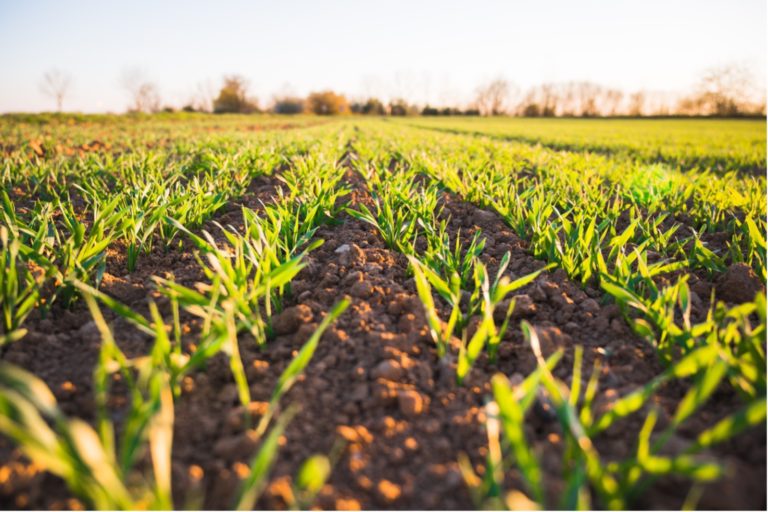Farming in space? Today, it’s possible!
Hydroponics is the future of farming in space, which will provide the resources needed to sustain long-term space missions. Find out how in this interview with Giorgia Pontetti, an electronic and aerospace engineer and owner of Ferrari Farm!
Farming in space is a scientific and technological frontier that opens up new possibilities for space exploration and the long-term sustainability of deep space missions. Addressing the unique challenges of farming in microgravity requires research and the development of innovative solutions. Intense exploration of this new scientific frontier not only helps provide fresh food and oxygen to astronauts on missions, improving the quality of life in space over the long term, but also could be a valuable learning opportunity to understand how plant life adapts to the space environment. Farming in space is also a crucial step forward for the future of space exploration and eventual human settlement on other planets.
Farming in space? Today, it’s a reality! We talked about it with Giorgia Pontetti, an electronic and aerospace engineer who is revolutionizing the world of hydroponics in Italy with her projects and research.
Farming in space: obstacles and techniques
Humans need plants to survive, both on Earth and in space. Since the beginning of space exploration, we have investigated every possible option for growing plants in orbit in order to use them as producers of nutrients and oxygen, shaping artificial ecosystems. The Italian Space Agency states that although we know for certain that seeds can germinate in space and produce new fruits, the success of farming is still inhibited by many environmental limitations: space is a hostile environment for growth. The answer lies in the variation of some essential terrestrial factors such as temperature, day-night cycle, atmospheric composition, free water and the introduction of some other non-terrestrial factors, such as microgravity or ionizing radiation.
“Any change in the level of these factors or the introduction of new environmental factors directs adaptation and evolution in specific directions since it affects all growth processes, from the cell cycle, to the genesis of organs and their proper functioning.”
It is in this vibrant research context that many hypotheses related to long-term missions have come forward, and it is widely agreed that it is correct to assume that human exploration should be based on Biogenerative Life Support Systems (BLSS). In short, plants here have the central role of recycling human waste, such as carbon dioxide, feces and urine while providing them with food. On the other hand, humans use plant waste, oxygen, and provide water and nutrients to plants with their own waste. So, how can we grow plants? One of the most studied solutions involves hydroponics, which involves growing the plant without soil in different substrates or aqueous solutions loaded with nutrients for growth.
Giorgia Pontetti: Italian ingenuity with the dream of farming in space
Giorgia Pontetti is the personification of Italian ingenuity. An electronic and aerospace engineer, she has dedicated her live to researching hydroponics, driven by the dream of one day farming on the moon. Today, she owns Ferrari Farm, a leader in hydroponics in Italia, where she cultivates tomatoes, basil and microgreens every day with hydroponic techniques she has perfected over time. We spoke to her about her goals and how she came to do this work.
“I am the granddaughter of an old-school farmer and the daughter of an electrical engineer: feet firmly planted on the ground and head in the clouds. I have always worked in aerospace and defense, but I have always been looking for a way to combine my farming roots with the technologies that I have studied and am fascinated with. And so, thinking about future crops on Mars, I decided to build an innovative hydroponic plant to go alongside the organic crops of native varieties that my company produces. It is a highly innovative, completely sterile and hermetically sealed plant, featuring two glass greenhouses and an LED-lit vertical farm, with fully automatic management.”
Hydroponics seems to be the future of farming. It is an ancient technique with futuristic applications. So what are the applications that her research team is working on or can work on in the future?
“We are working on cutting-edge technological applications, from the cultivation of rare and exotic species even in extreme environments, to the study of systems for farming in space in light of future human missions to the moon and Mars, as well as the possibility of using products obtained from hydroponic agriculture in a sterile and hermetic environment, such as food-based “inks” for 3D printing of foods for personalized nutrition with very high vitamin and nutrient properties.”
So adapting hydroponic farming to any extreme terrestrial or extraterrestrial context is a real possibility?
“My passion for hydroponics stems from the need to use it for space cultivation in light of future human missions to the moon, Mars and other planets. And the need/possibility of farming in space gave rise to the challenge of doing it first on Earth, to take farming anywhere, to the most extreme and impervious areas of our planet. Farming in an artificial, sterile and hermetically sealed environment is the only conceivable solution today to cultivating on other planets with different atmospheric conditions, with soils of a different nature, with scarcity of water resources and the need to optimize consumption, maximizing yields and the organoleptic/nutritional/functional values of food.”
How is this cultivation technique being applied in space today?
“Currently on the International Space Station [ISS], numerous experiments in the germination and growth of plants and flowers have been performed and there is a small cultivation module that can supply the resident crew fresh salad. Solutions are being investigated by the international scientific community to create artificial bioregenerative systems to replicate the Earth’s biosphere in an artificial way, with the aim of creating systems that are able – starting with the interaction between the plants and humans – to feed the crew and dispose of the waste they produce with the same mechanisms that occur on our Planet (in the absence of pollution and disturbances).”
To meet Giorgia Pontetti and learn about her work, stop by the Life pavilion at Maker Faire Rome 2023. October 20-22.
Maker Faire Rome – The European Edition has been committed since its very first editions to make innovation accessible and usable to all, with the aim of not leaving anyone behind. Its blog is always updated and full of opportunities and inspiration for makers, makers, startups, SMEs and all the curious ones who wish to enrich their knowledge and expand their business, in Italy and abroad.
Follow us on our social channels (Facebook, Twitter, Instagram, LinkedIn, YouTube) and subscribe to our newsletter: we promise to let just the right content for you to reach your inbox.




















































































